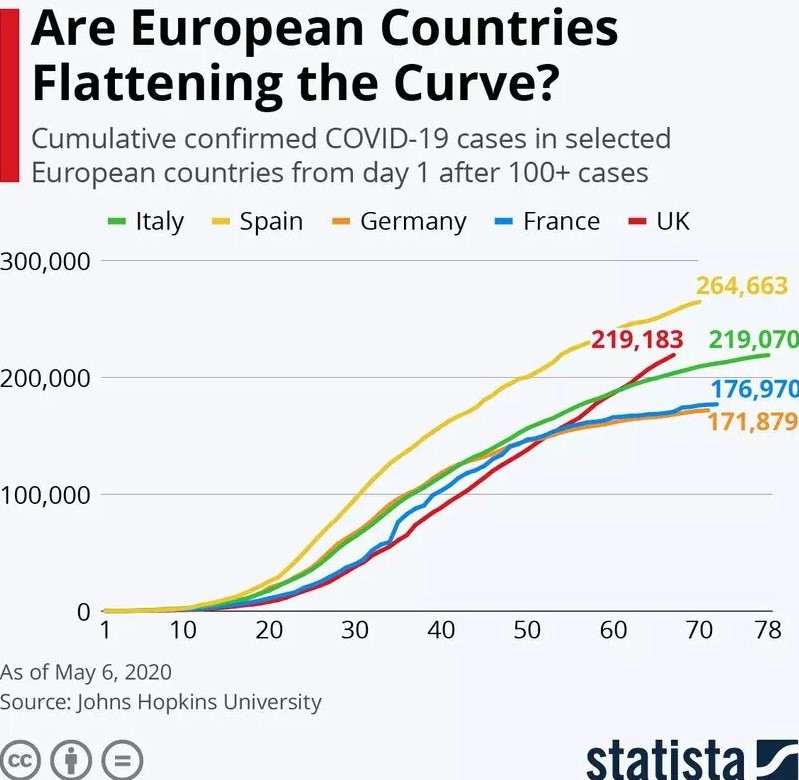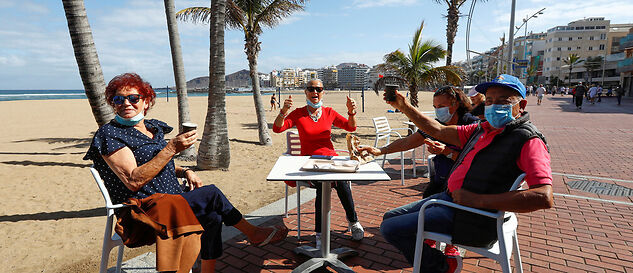HAVANA — As countries begin to ease lockdown measures in order to kickstart their economies, all eyes are on how international borders will reopen, thereby enabling business and tourism to resume.
Some nations have already agreed on, or mooted the possibility of, establishing “travel bubbles” whereby groups of countries who have low, manageable rates of infection allow each others’ citizens to enter freely. Quarantine restrictions are meanwhile imposed on those outside the bubble.
The global travel and tourism industry was estimated to be worth over $700 billion in 2020 – and it’s now forecast to be $447 billion as a result of the coronavirus pandemic.
Europe is likely to be particularly hard hit, with predicted revenue dropping from more than $200 billion to $124 billion.
Tourism (including travel, accommodation, food and culture) contributes almost 10% of EU GDP, while between June and August, EU residents typically make 385 million tourism trips and spend €190 billion ($205 billion).
Guidelines for Europe
On Wednesday, the European Commission issued guidance on how to resume travel safely, thereby rebooting Europe’s tourism industry.
The first principle for “the safe and gradual restoration of tourism activities” is epidemiological evidence showing the spread of COVID-19 has “significantly decreased and stabilized for a sustained period of time, and is likely to remain stable with the increased tourist population”.
Other criteria that need to be met include: sufficient health capacity to deal with tourists getting sick; testing; surveillance and monitoring; and contact tracing.
Crucially, it suggests that those EU countries where the rate of infection is slowing to a similar extent could ease restrictions with each other:
“If a generalized lifting of restrictions is not justified by the health situation, the Commission proposes a phased and coordinated approach that starts by lifting restrictions between areas or Member States with sufficiently similar epidemiological situations.”

It outlines three criteria for lifting restrictions:
1. Epidemiological: specifically, the Commission points to the European Centre for Disease Prevention and Control (ECDC) data and regional map as a guide to those areas where the situation is improving.
2. Containment measures being applied throughout the whole journey, including at border crossings.
3. Economic and social considerations: giving priority to “cross-border movement in key areas of activity and including personal reasons”.
The Commission also stresses the importance of “non-discrimination”: “When a Member State decides to allow travel into its territory … it should do so in a non-discriminatory manner – allowing travel from all areas, regions or countries in the EU with similar epidemiological conditions…
“Any restrictions must be lifted without discrimination, to all EU citizens and to all residents of that Member State regardless of their nationality, and should be applied to all parts of the Union in a similar epidemiological situation.”
Member States have also agreed on allowing COVID-19 tracing apps to operate across borders, so that citizens can be warned of possible infection when they travel in the EU.
The Commission said: “Such tracing apps must be voluntary, transparent, temporary, cybersecure, using anonymised data, should rely on Bluetooth technology and be inter-operable across borders as well as across operating systems.”
The Baltics
From 15 May, major trading partners Latvia, Lithuania and Estonia are opening their borders to allow citizens from each country to travel freely in and out.
Anyone entering from outside the three Baltic nations will have to remain in quarantine for 14 days.
The countries’ Prime Ministers agreed the move via video link after the number of confirmed cases fell.
Using the hashtag #BalticOpening, Lithuanian Prime Minister Saulius Skvernelis said on Twitter that Finland and Poland could be the next countries to “join the free travel bloc”.
New Zealand and Australia
On 5 May, the leaders of Australia and New Zealand, Prime Ministers Scott Morrison and Jacinda Ardern, respectively, announced their commitment to introducing a trans-Tasman COVID-safe travel zone “as soon as it is safe to do so”.
They said the zone would be “mutually beneficial, assisting our trade and economic recovery, helping kick-start the tourism and transport sectors, enhancing sporting contacts, and reuniting families and friends”.
But they added a note of caution: “Neither country wants to see the virus rebound so it’s essential any such travel zone is safe. Relaxing travel restrictions at an appropriate time will clearly benefit both countries and demonstrates why getting on top of the virus early is the best strategy for economic recovery.”
They also said that once effective travel arrangements had been established across the Tasman, they would broaden the zone out to include Pacific Island Countries.
New Zealand has just begun reopening businesses as it moved to level two of its alert system. People queued for haircuts as barbers opened at midnight. The country has been praised for its handling of coronavirus – it has had 21 deaths and reported no new confirmed cases for the second consecutive day on May 13.
—WORLD ECONOMIC FORUM



